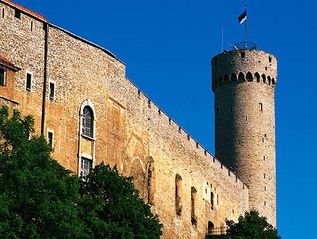Estonia suffered
the fate of other Baltic countries, occupied for hundreds of years by stronger
neighbors, with Swedes, Russians, and Poles fighting over the region. Russia
finally took over from the Swedes in the 18th century. Estonia enjoyed a brief
period of independence from 1919-40, then came under Soviet domination as a
result of the Molotov-Ribbentrop pact. Only lightly damaged in World War II,
Tallinn expanded quickly after the war as Russian industrialization drew ethnic
Russian immigrants from other republics. Estonia regained independence with the
breakup of the Soviet Union in 1991. Politically, Estonia has gone far in
building democratic institutions. But some problems remain, particularly with
respect to the Russian-speaking minority, which constitutes about a third of
the population, and to government efforts to integrate these minorities into
Estonian society. Internationally, Estonia is a member of the World Trade
Organization (WTO). Given its strong desire to become part of western security
structures, Estonia has a goal of NATO accession in 2002. Estonia is one of the
most market-oriented, open economies in the former Soviet Union, and maintains
a moderate, sustainable economic growth. By itself a small market, Estonia
occupies a strategic geo-economic position between the EU and Russia and
encourages investment from firms that plan to expand their operations in the
region. Bilaterally, the embassy operates in a friendly environment and is well
positioned to support Estonia's desire to integrate into western institutions.
American Embassy Tallinn:
The inspection took place from November 1-15 another ten workdays and two welcome weekends. The Ambassador had left the country before the inspection and the embassy was in the capable hands of the charge d'affaires, Dolores Brown, who went on to be the Management Counselor in Cairo when I was there TDY in the summer of 2009. The Management Officer, Mike Tulley, became the Director of HR/OE and I had numerous contacts with during the survey phase of future inspections. Mike was an avid supporter of Manchester United of the English Premier League whereas I was a fan of Arsenal, which he didn't appreciate.
Findings:
Some of the formal recommendations involved:
- An issue regarding the disposition of value added taxes that did not comply with Department of State instructions for handling and reporting receipts.
- It was surprising that Tulley was not consistently performing the monthly unannounced verification of the principal cashier's accountability as required.
- Supervisors of sub cashiers did not perform unannounced cashier verifications as required.
- For management to verify the monthly
consular receipts with official collections, and the accountable consular
officer monthly summary of the daily accounting of consular
fee receipts.
- The need to establish an
accounts receivable ledger to track collections for long-distance personal
telephone calls, mileage for authorized use of vehicles, outstanding travel
advances, and other official bills for collection.
  |
| In Town Bob, Joanne, Joe and I having drinks |

 |
| Street in old town |










